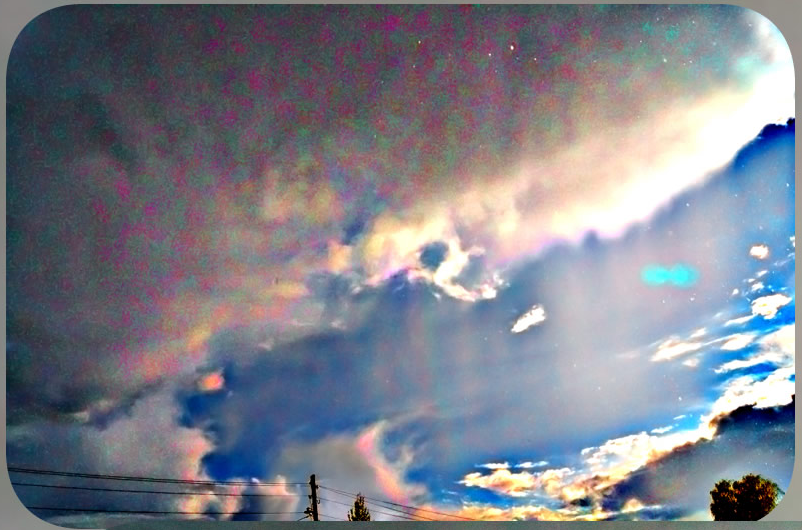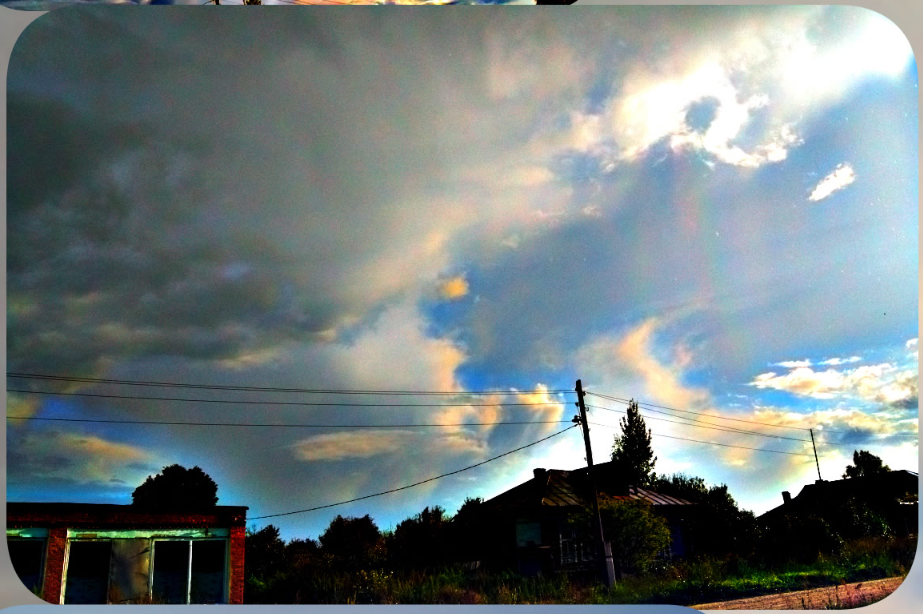Russian 3rd and 4th order rainbows 30 August 2014 - OPOD
Russian 3rd and 4th Order Rainbows: A Captivating Atmospheric Phenomenon
On August 30, 2014, Sergei Antipov had the opportunity to capture the mesmerizing sight of 3rd and 4th order rainbows near Nizhny Novgorod, Russia. This sighting was particularly unique as the rainbows appeared against a backdrop of clear blue sky, rather than the more common dark cloud. Antipov, an avid photographer, had previously captured these elusive rainbows in 2013, making this sighting even more special.
According to Antipov, the brightness of the 3rd and 4th order bows was relatively less compared to his previous encounter in June 2013. Eager to document the event, he quickly set up his camera but was unable to use a tripod due to the rainbows vanishing swiftly. Despite this challenge, he managed to capture five stunning photographs of the rainbows.
To enhance the quality of his images, Antipov utilized a polarizing filter. Interestingly, when he turned the filter at a 90° angle, the rainbows completely disappeared from view. Although Antipov could not see the 3rd and 4th order rainbows with his naked eye, he had a strong intuition that something extraordinary was occurring in that particular area of the sky.
The Beauty and Rarity of 3rd and 4th Order Rainbows
Rainbows are already a captivating natural phenomenon, but 3rd and 4th order rainbows take this beauty to another level. These higher-order rainbows occur when sunlight undergoes multiple internal reflections within raindrops, resulting in additional bands of colors beyond the primary and secondary rainbows that we commonly observe.
While primary rainbows consist of red on the outer edge and violet on the inner edge, 3rd and 4th order rainbows showcase even more intricate color patterns. These rainbows often exhibit additional colors, such as orange, green, and even purple. The higher the order, the fainter and narrower the bands become.
The Science Behind 3rd and 4th Order Rainbows
To fully appreciate the wonder of 3rd and 4th order rainbows, it's essential to understand the scientific principles at play. When sunlight enters a raindrop, it undergoes both refraction and reflection. The light rays bend as they pass from air to water and then reflect off the inner surface of the raindrop before exiting back into the air.
During this process, the light rays experience multiple internal reflections within the raindrop, creating a complex interplay of colors. Each internal reflection causes the rays to separate further, resulting in the formation of higher-order rainbows. The specific angles at which these internal reflections occur determine the order and appearance of the rainbows.
Capturing the Elusive Beauty
Photographing 3rd and 4th order rainbows can be quite challenging due to their fleeting nature and subtle appearance. These rainbows are often much fainter than primary and secondary rainbows, requiring precise timing and favorable lighting conditions to capture their full glory.
To increase the chances of capturing these elusive rainbows, photographers often employ various techniques. Using a polarizing filter, as Antipov did, can help reduce glare and enhance the visibility of the higher-order rainbows. Additionally, positioning oneself at an optimal angle to the raindrops can also maximize the chances of witnessing and photographing these rare atmospheric phenomena.
A Testament to Nature's Complexity
The appearance of 3rd and 4th order rainbows against a clear blue sky adds another layer of intrigue to this already fascinating phenomenon. Typically, rainbows are associated with rainfall or stormy conditions. However, this unique sighting in Russia demonstrates that rainbows can manifest even in the absence of clouds, showcasing the complexity and unpredictability of atmospheric optics.
As we continue to explore and appreciate the wonders of the natural world, encounters like these remind us of the vastness of the atmospheric realm and the astonishing phenomena that can occur within it. Through the lens of a camera or with our own eyes, capturing moments like the Russian 3rd and 4th order rainbows allows us to marvel at the beauty and intricacy of our planet's atmosphere.

30 August '14 Sergei Antipov again captures 3rd and 4th order rainbows near Nizhny Novgorod, Russia. His previous capture was in 2013.
The latest sighting is unusual for being seen against blue sky rather than dark cloud.
"The brightness of 3rd & 4th order bows was less than in June, 2013. I photographed all the rainbows that have so far appeared in 2014 and today was the first good luck! I wanted to use a camera tripod, but wasn't in time: all the rainbows quickly disappeared. I managed to make only 5 pictures.
I used a polarizing filter. With the filter turned 90° the rainbows were absent.
With the naked eye I didn't see the 3,4 bows, but there was an intuition that something was in this area of the sky."



 Grossmann May '11, Theusner June '11
Grossmann May '11, Theusner June '11

 2013
2013


 2014
2014


 2014
2014
Note: this article has been automatically converted from the old site and may not appear as intended. You can find the original article here.
Reference Atmospheric Optics
If you use any of the definitions, information, or data presented on Atmospheric Optics, please copy the link or reference below to properly credit us as the reference source. Thank you!
-
<a href="https://atoptics.co.uk/blog/russian-3rd-and-4th-order-rainbows-30-august-2014-opod/">Russian 3rd and 4th order rainbows 30 August 2014 - OPOD</a>
-
"Russian 3rd and 4th order rainbows 30 August 2014 - OPOD". Atmospheric Optics. Accessed on November 26, 2024. https://atoptics.co.uk/blog/russian-3rd-and-4th-order-rainbows-30-august-2014-opod/.
-
"Russian 3rd and 4th order rainbows 30 August 2014 - OPOD". Atmospheric Optics, https://atoptics.co.uk/blog/russian-3rd-and-4th-order-rainbows-30-august-2014-opod/. Accessed 26 November, 2024
-
Russian 3rd and 4th order rainbows 30 August 2014 - OPOD. Atmospheric Optics. Retrieved from https://atoptics.co.uk/blog/russian-3rd-and-4th-order-rainbows-30-august-2014-opod/.